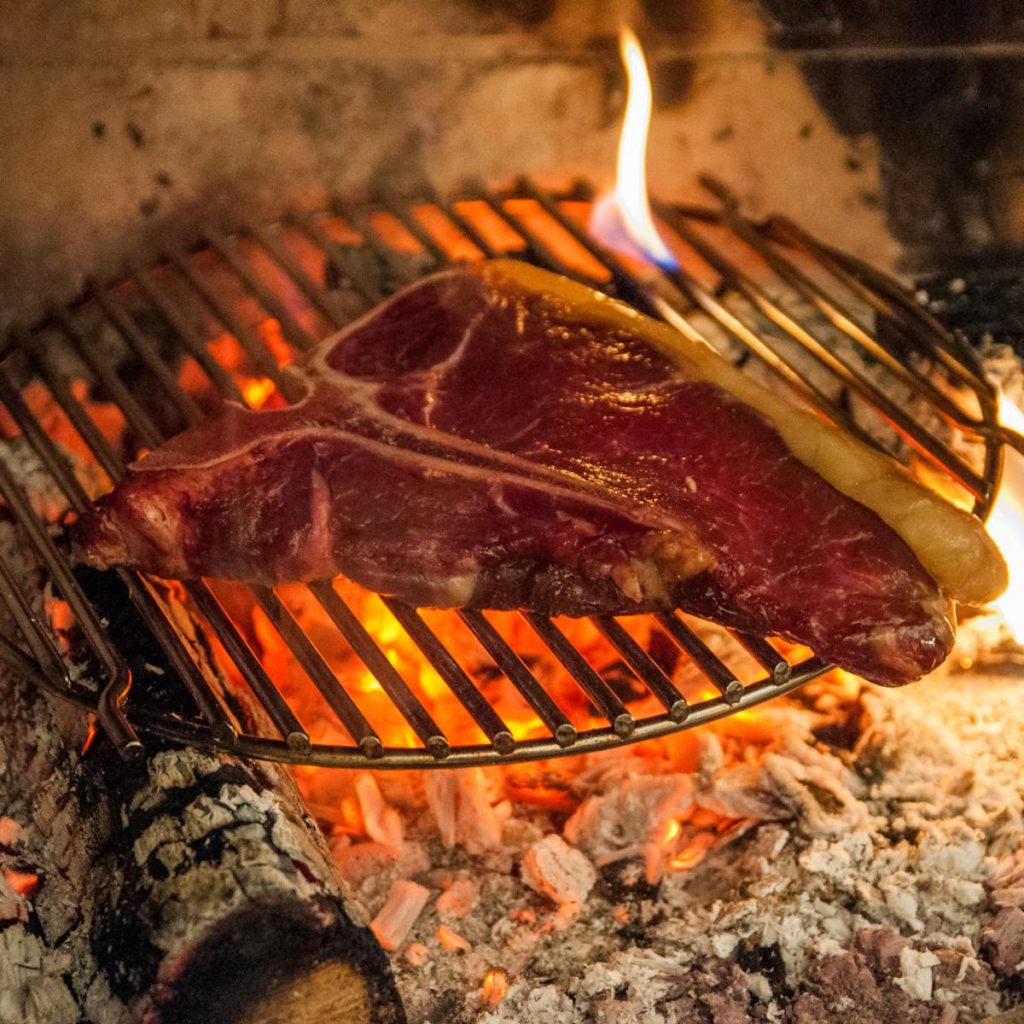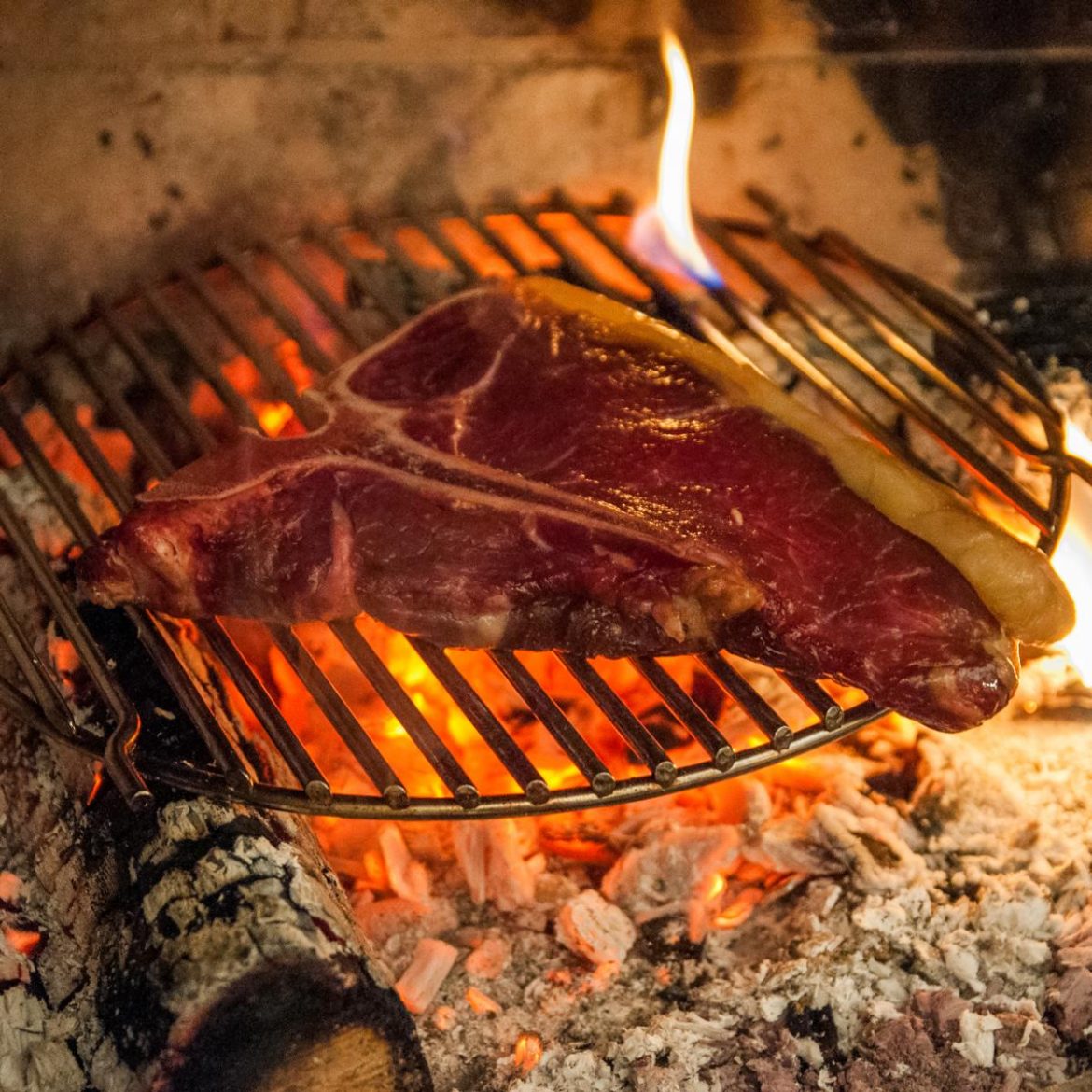DEUTSCHE VERSION NACH DEM ENGLISCHEN TEXT
Pea Protein Isolate, Methylcellulose, gum arabic, maltodextrin, ascorbic acid, beetroot – No, these are not the analysis results of a surprisingly discovered Seveso dioxin barrel but the ingredients of a “Beyond Meat” burger…

From normally well-informed sources, we have also learned that their parent company “Beyond common sense” is working on a successor product: The “Beyond Porsche” looks like a 911 from the outside but is powered by two e-bikes while discreetly placed Bose speakers provide the 6 cylinder boxer engine sound ?
The idea that meat must be on the plate every day is a relic of the World War II generation. Against the background of the Wahlen plan – where every front garden in Switzerland was planted with potatoes – and the raisin bomber over Berlin, this was somehow understandable. Nevertheless, this trauma should be overcome by now and we prefer to enjoy a well-prepared meat from animal-friendly rearing once or twice a week rather than scrap every day.
At the beginning of the 1970s the mathematics teachers celebrated the overcoming of numbers and variables and taught us set theory. I didn’t take much away from it for my everyday life, except that the intersection between “good preparation of meat” and “barbecue” is extremely small. It hurts me deeply in my heart that animals had to die in order to be cremated afterwards in the form of a “BBQ cutlet” pasted with industrial marinade on a disposable grill in the city park at 450 degrees.
Therefore allow me small excursion to the cell-biological bases of meat: Muscle meat consists of proteins, which divide under heat effect into liquid and a firmer core of lumps (coagulation). As the temperature rises, the meat becomes therefore more humid and dense. With myosin, this process begins at 50 degrees Celsius and at 60-65 degrees large quantities of liquid leak out and the meat is reduced by about one sixth. At about 70 degrees the collagen begins to transform into gelatine and the individual muscle fibres are easier to separate. Depending on the type of preparation, one or the other is desired: a beef fillet is perfect at around 60 degrees, while a goulash has to be cooked at 70 degrees for a longer time so that the meat dissolves on the tongue.

On this basis, four rules of thumb can be derived for preparing perfect meat:
1. the meat must be removed from the refrigerator in good time before cooking. Depending on the size of the meat, this should typically be done one hour in advance.
2. pieces of meat must be cooked slowly so that the meat has the ideal temperature everywhere at the inside. This can be done, for example, in the oven at low temperatures (low temperature cooking) or in a plastic bag in a water bath (sous vide).
3. fry the meat briefly but fiercely for the supplementary roasting aromas. This can be done either before cooking (typical approach for low temperature cooking) or afterwards (sous-vide preparation). We find a good marinade indispensable, even if some sous-vide recipes propose otherwise.
4. Until serving, the meat can be kept warm in the oven at 60°C for a long time without this having a negative effect on the core temperature.
So please stop your neighbour the next time he throws the cutlet directly from the cool box onto the grill nd chars it on the outside whilst it remains raw on the inside and then puts in on the serving plaet for serving to cool down for a quarter of an hour before it is served to the guests… If he can’t be helped – give him a “beyond meat” as gift ?
Good success and best regards,
Von Pedalo-Porsches, fleischlosen Burgern, Mengenlehre und anderen Absurditäten
Erbsenproteinisolat, Methylcellulose, Gummi Arabicum, Maltodextrin, Ascorbinsäure, Beetenrot – Nein, dies sind nicht die Analyseresultate eines überraschend aufgetauchten Seveso Dioxin Fasses sondern Inhaltsstoffe eines «Beyond Meat» Burgers…
Aus normalerweise gut unterrichteten Quellen haben wir zudem erfahren, dass deren Mutterhaus «Beyond common sense» an einem Nachfolgeprodukt tüftelt: Der «Beyond Porsche» sieht von aussen aus wie ein 911er wird aber im Innern von zwei e-bikes betrieben während dezent platzierte Bose Lautsprecher für den 6 Zylinder Boxermotorensound sorgen ?
Die Vorstellung, dass jeden Tag Fleisch auf dem Teller sein müsse, ist ein Relikt der Weltkriegsgeneration. Vor dem Hintergrund des Wahlen-Plans – wo in der Schweiz jeder Vorgarten mit Kartoffeln bepflanzt wurde – und der Rosinen-Bomber über Berlin war dies irgendwie verständlich. Dennoch sollte dieses Trauma mittlerweile überwunden sein und wir geniessen lieber ein, zwei Mal pro Woche ein gut zubereitetes Fleisch aus tiergerechter Haltung als täglich irgendwelchen Schrott.
Anfangs der 1970er Jahre haben die Mathematiklehrer die Überwindung von Zahlen und Variablen gefeiert und uns die Mengenlehre beigebracht. Ich habe daraus für meinen Lebensalltag nicht viel mitgenommen, ausser dass die Schnittmenge zwischen «guter Zubereitung von Fleisch» und «Grill» extrem klein ist. Es schmerzt mich tief in meinem Herzen, dass Tiere sterben mussten, um nachher in Form eines mit Industriemarinade zugekleisterten «Saftplätzlis» auf einem Einweg-Grill im Stadtpark bei 450 Grad kremiert zu werden.
Deshalb ein kleiner Exkurs zu den zellbiologischen Grundlagen von Fleisch: Muskelfleisch besteht aus Proteinen, welche sich unter Hitzeeinwirkung in Flüssigkeit und einen festeren Kern aus Klümpchen (Koagulation) aufteilen. Bei steigender Temperatur wird das Fleisch somit feuchter und dichter. Beim Myosin beginnt dieser Prozess bei 50 Grad Celsius und bei 60-65 Grad treten grössere Mengen Flüssigkeit aus und das Fleisch verkleinert sich um etwa einen Sechstel. Bei circa 70 Grad beginnt sich das Kollagen in Gelatine umzuwandeln und die einzelnen Muskelfasern lassen sich leichter trennen. Je nach Zubereitungsart ist das eine oder das andere gewünscht: ein Rindsfilet ist um die 60 Grad perfekt, während ein Gulasch längere Zeit bei 70 Grad gegart werden muss, damit das Fleisch auf der Zunge zerfällt.
Auf dieser Grundlage lassen sich ein vier Faustregeln ableiten, um perfektes Fleisch zuzubereiten:
- Das Fleisch ist rechtzeitig vor der Zubereitung aus dem Kühlschrank zu nehmen. Je nach Grösse des Fleischs typischerweise eine Stunde vorher.
- Fleischstücke muss man langsam garen, damit das Fleisch im Innern überall die gewünschte Idealtemperatur hat. Dies kann z.B. im Backofen bei niedrigen Temperaturen (Niedergaren) oder in einem Plastikbeutel im Wasserbad (sous vide) geschehen.
- Für die ergänzenden Röstaromen ist das Fleisch kurz aber heftig anzubraten. Dies kann entweder vor dem Garen (typischerweise beim Niedergaren) oder danach (bei der sous-vide Zubereitung) geschehen. Eine gute Marinade finden wir dabei unabdingbar, auch wenn in manchen sous-vide Rezepten davon abgesehen wird.
- Bis zum Servieren kann man das Fleisch über längere Zeit bei 60 Grad im Backofen warm halten, ohne dass dies negative Auswirkungen auf den Garzustand hat.
Also stoppt bitte euren Nachbarn, wenn er das nächste Mal das Schnitzel direkt aus der Kühlbox auf die Grillflamme wirft und dann aussen verkohlt und innen roh auf den Servierteller legt um es eine Viertelstunde später abgekühlt den Gästen zu servieren…Wenn er partout nicht anders kann, so schenkt ihm doch ein «beyond meat» ?
Gutes Gelingen und liebe Grüsse,



